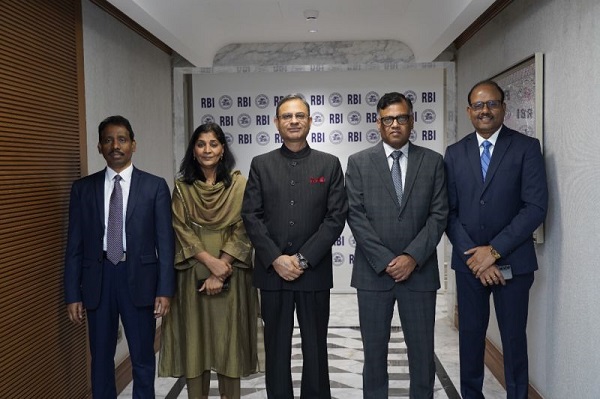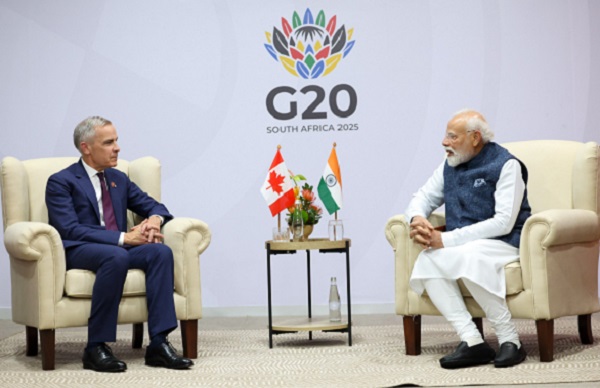.png)

Groupthink is the House View of BasisPoint’s in-house columnists.
July 11, 2025 at 4:35 AM IST
India’s fiscal stance in recent years has puzzled many observers. Why would a developing economy with vast needs choose fiscal restraint at a time when global conditions seem to invite cheap borrowing? Why would a government prioritise contractionary budgeting when its own central bank pursues an accommodative policy?
That puzzle has come into sharper focus thanks to a recent conversation between Monika Halan and Neelkanth Mishra, Chief Economist at Axis Bank and a part-time member of the Prime Minister’s Economic Advisory Council. Their discussion highlighted the rationale behind India’s fiscal strategy with unusual clarity. This is not simply about balancing the books for their own sake, but about creating the conditions for sustained, private-led investment while protecting sovereign credibility in an uncertain world.
Government spending surged during the pandemic, with India’s general government deficit approaching 13.1% of GDP at its peak. Since then it has been reduced to around 7.5–8%, with a stated commitment to lower the levels over time. The Centre’s fiscal deficit is projected to fall to 4.4% of GDP and states to 3.3% in 2025-26.
This has come at real cost. Fiscal tightening acts as a brake on short-term demand, slowing headline growth and requiring the government to absorb political pain. Yet policymakers have persisted, choosing to accept this drag now rather than store up greater risk for the future.
One major reason is the desire to strengthen India’s case for a sovereign credit rating upgrade. The country currently sits only one notch above speculative grade at major agencies, a level that does not fully reflect its improving fundamentals. By showing clear fiscal discipline, the government is working to reassure investors and rating agencies that debt remains sustainable and well-managed.
The Centre has redrawn its fiscal consolidation strategy to keep its fiscal deficit such that the Central Government debt reduces to 50% of GDP by March 31, 2031.
According to a projection by the International Monetary Fund, India’s general government debt will be on a declining trend between 2025 and 2030 in contrast to its peers and the average position of emerging market and developing economies and advanced economies.
The goal is not merely to avoid the risk of downgrade, but to earn recognition of India’s stronger macroeconomic framework and reduce the premium investors demand.
Such an upgrade would have tangible benefits. It would lower sovereign borrowing costs directly while also sending a powerful signal to global capital markets. A higher rating supports currency stability, boosts investor confidence, and improves access to long-term financing, crucial for funding India’s vast infrastructure and development needs.
Cost of Capital
This defensive strategy is also a proactive bet on reducing India’s structural cost of capital. For decades, high sovereign risk premiums have kept India’s real borrowing costs elevated, undermining the viability of capital-intensive industries and infrastructure projects. Fiscal slippage reinforces these premiums. Discipline, on the other hand, can reduce them. By signalling a clear commitment to consolidation, the government has helped stabilise the benchmark 10-year yield near to 6%, with scope to fall further.
A lower sovereign yield does not simply make government debt cheaper. It lowers financing costs across the economy. Corporates, infrastructure developers and households all benefit when the hurdle rate for long-term investment declines. That, in turn, makes projects more viable, unlocking private capital that is essential to meeting India’s development ambitions.
This is also why the government’s tight fiscal stance has been matched by relatively loose monetary policy from the RBI. Far from being contradictory, this policy mix is designed to support private demand without losing fiscal credibility. Fiscal restraint anchors inflation expectations, supports ratings ambitions, and keeps long-term yields contained. Accommodative monetary conditions maintain liquidity and encourage private risk-taking. The combined effect is to enable investment growth on a more sustainable foundation.
The approach reflects an important understanding of investment cycles. Private capital expenditure is not the starting point of growth but its outcome, argues Mishra. Entrepreneurs and companies invest when they see demand and when the cost of financing makes projects viable. The government’s role is to set the stage by reducing macroeconomic risks, ensuring stable rates, and avoiding crowding out private borrowers with its own excessive deficits.
There is also a clear awareness of the shifting global environment. Developed markets are wrestling with elevated sovereign debt, rising yields and the risk of crowding out their own private credit. Emerging markets may face higher risk premiums as global rates adjust. India’s defensive posture on debt aims to ensure it remains among the most attractive destinations for capital even in a tighter world.
Critics will argue that India’s development needs remain enormous, and that the government should borrow more aggressively to fund infrastructure or expand social spending. Yet this critique misses the broader trade-off. Sustainable development relies not on unchecked borrowing, but on affordable, reliable access to capital over time. Persistent fiscal prudence can actually unlock that access by demonstrating policy credibility and reducing investor concerns.
Instead, India is effectively biding its time. It is building the conditions for private investment to lead the next growth cycle. It is ensuring that when scaled-up borrowing is required, whether for infrastructure, social programmes or crisis response, it can access markets on favourable terms without triggering panic or punitive rates.
As Mishra outlined, this approach accepts the reality of a near-term drag on growth in exchange for long-term stability. It is designed to maintain steady compounding around 6.5% or 7%, supported by domestic demand and private capital formation once the base is ready.
Ultimately, what might appear to be fiscal purism is better understood as a strategic choice. It trades short-term political rewards for sovereign credibility, cheaper capital, and sustainable private investment. In an uncertain global environment marked by shifting interest rates and volatile capital flows, that hidden strength may be India’s most important economic advantage.




